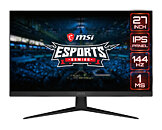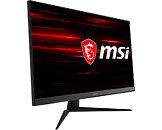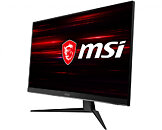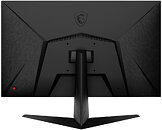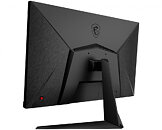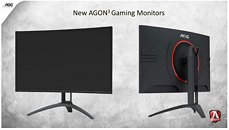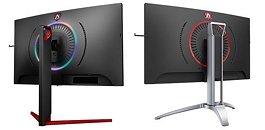
MSI Announces the Optix PAG272 Monitor Family With Four Models - One of Them With Quantum Dot
MSI today announced the release of not one, not two, but four monitors to their Optix lineup, under the Optix PAG272 family. These monitors aim to cater to all budgets, apparently, as their features vary across resolution and refresh rates according to the model number. RGB lighting on the back of the monitors is stock across the lineup. Starting from the top-down in terms of specs, the Optix PAG272URV features a 27", IPS panel sporting 4K resolution, 60 Hz refresh rate, a 4 ms GtG response time, FreeSync (non-Premium), and VESA Display HDR 400 certification. I/O is taken care of by 2x HDMI (1.4), 1x HDMI (2.0) and 1x DisplayPort (1.2).
That's not the most impressive display, though - that honor is reserved for the Optix PAG272QR2. The Optix PAG272QR2 features a 27", IPS panel sporting 1440p resolution, 165 Hz refresh rate, a 1 ms GtG response time, FreeSync Premium, and an HDR-ready badge (with maximum brightness set at 300 nits). I/O is taken care of by 2x HDMI (2.0) and 2x DisplayPort (1.4). The more interesting spec in this panel, though, is the addition of a Quantum Dot layer, which greatly improves color rendition: MSI claim 10 bit colors (8 bit + FRC) with 150% of the sRGB color gamut coverage, alongside 99% of the Adobe RGB color gamut, and 98% of the DCI-P3 color space, which makes this an interesting panel not only for gaming, but also for color-sensitive tasks.
That's not the most impressive display, though - that honor is reserved for the Optix PAG272QR2. The Optix PAG272QR2 features a 27", IPS panel sporting 1440p resolution, 165 Hz refresh rate, a 1 ms GtG response time, FreeSync Premium, and an HDR-ready badge (with maximum brightness set at 300 nits). I/O is taken care of by 2x HDMI (2.0) and 2x DisplayPort (1.4). The more interesting spec in this panel, though, is the addition of a Quantum Dot layer, which greatly improves color rendition: MSI claim 10 bit colors (8 bit + FRC) with 150% of the sRGB color gamut coverage, alongside 99% of the Adobe RGB color gamut, and 98% of the DCI-P3 color space, which makes this an interesting panel not only for gaming, but also for color-sensitive tasks.


